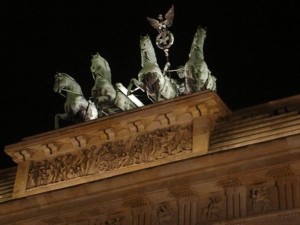
This year will celebrate the 20th anniversary of the fall of the Berlin Wall which, in combination with more medium and long-term factors, ultimately proved to be a catalyst for the end of communism. Now a new visitors’ map has been launched to attract those who are or may be intrigued by the former internationally-secluded and secretive East Germany.
The “Welcome to the country without border” map introduces travellers to sites of change and commemoration in Berlin, Brandenburg, Mecklenburg-Vorpommern, Saxony, Saxony-Anhalt and Thuringia. Each area is represented on the map with about ten sites and locations such as memorials, museums, leftovers of former border installations, bunkers or restored historical buildings and town centres. Each site comes with a short description on the backside of the map helping visitors to put together their own route through Eastern Germany.
Since the fall of the Wall in 1989, Germany has changed its look with many buildings, squares and city centres having been painstakingly restored. What used to be no man’s land in Berlin is now “Potsdamer Platz”. In Brandenburg, the restoration of Potsdam’s historical centre will be completed with the reconstruction of the “City Palace” in 2011. After its rebuilding, “Schwerin Palace” in Mecklenburg-Vorpommern is now seat of the federal state’s parliament. Reopened in 2005, the famous “Church of Our Lady” in Dresden has risen from the ashes to being one of the city’s jewels after its complete destruction in World War II.















